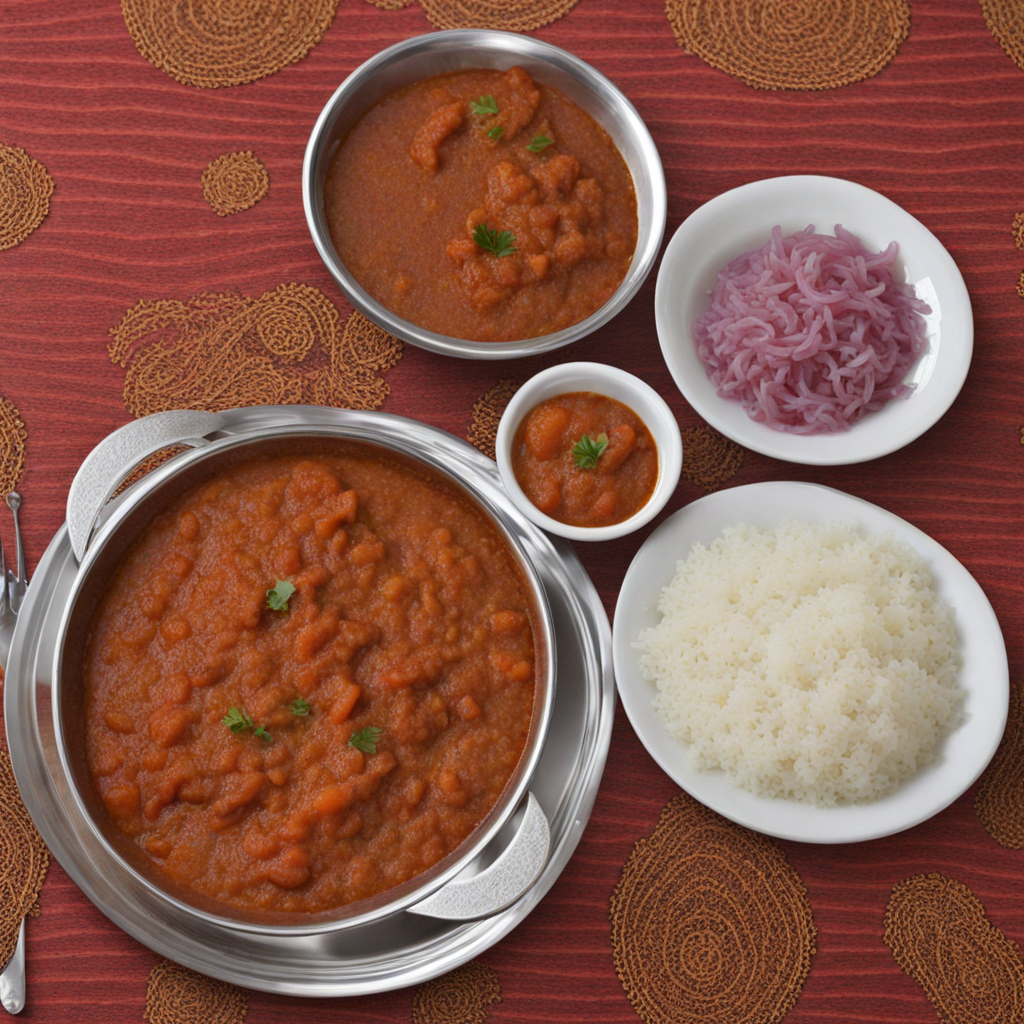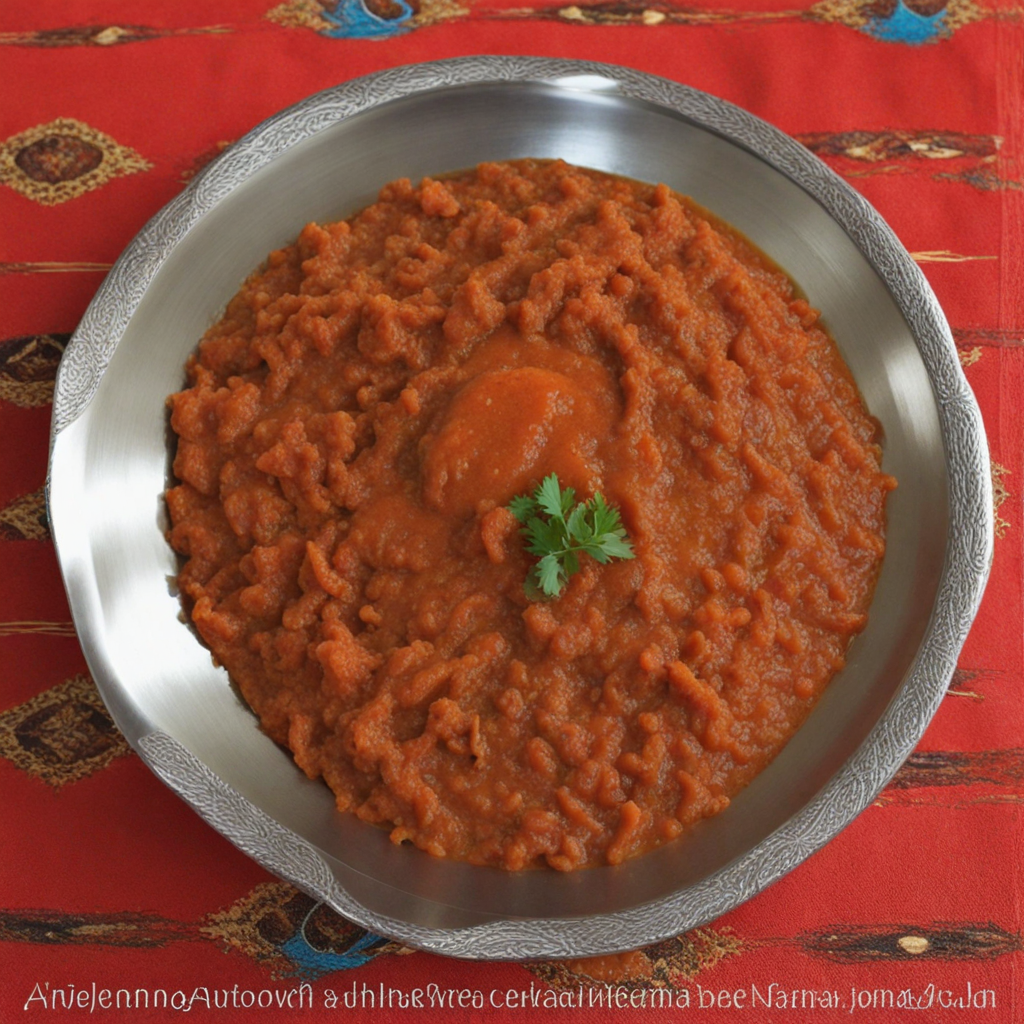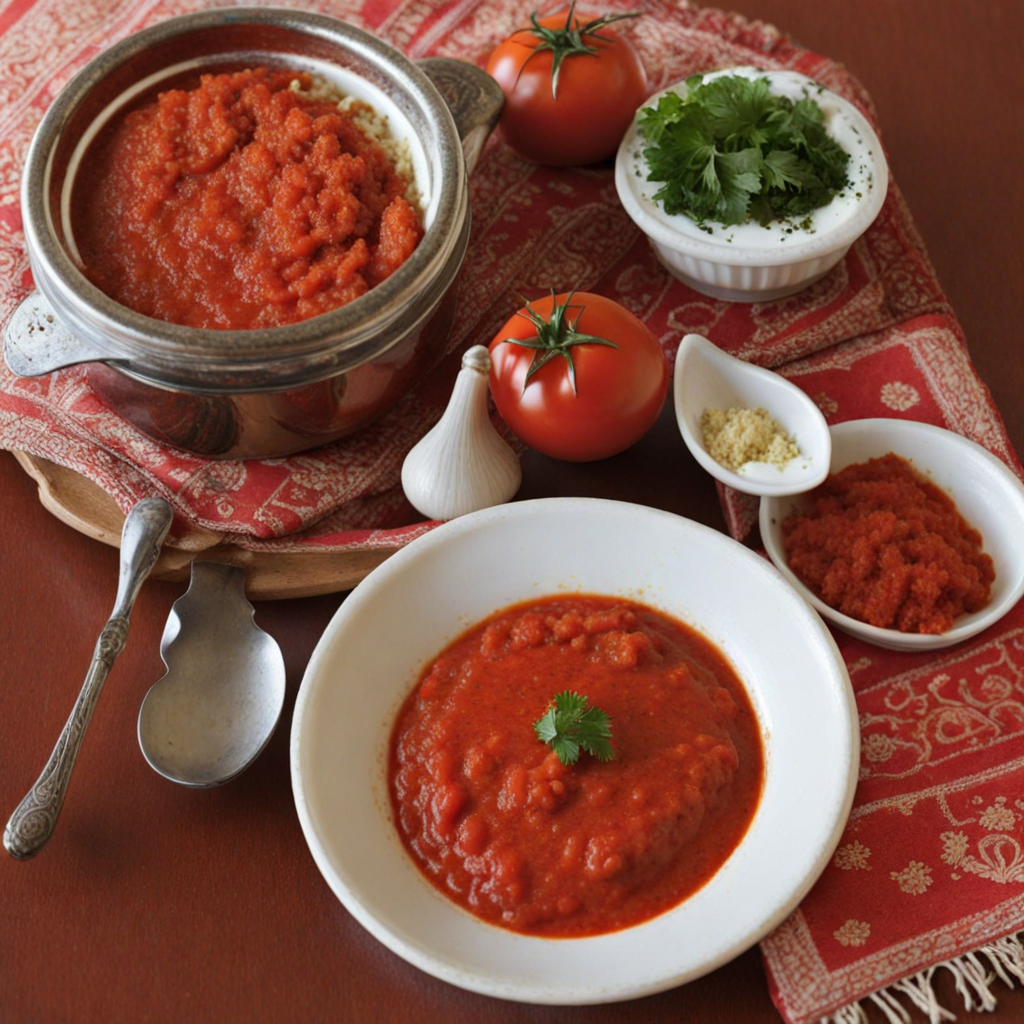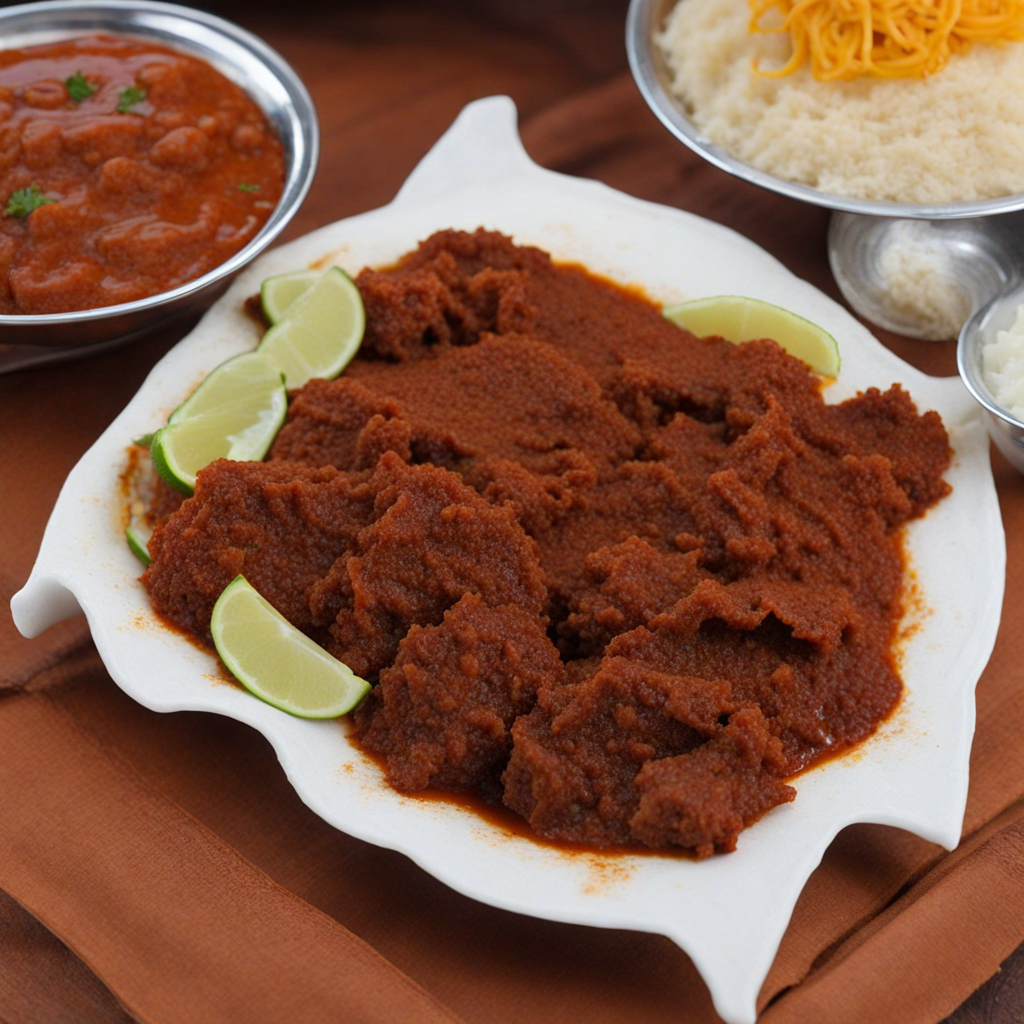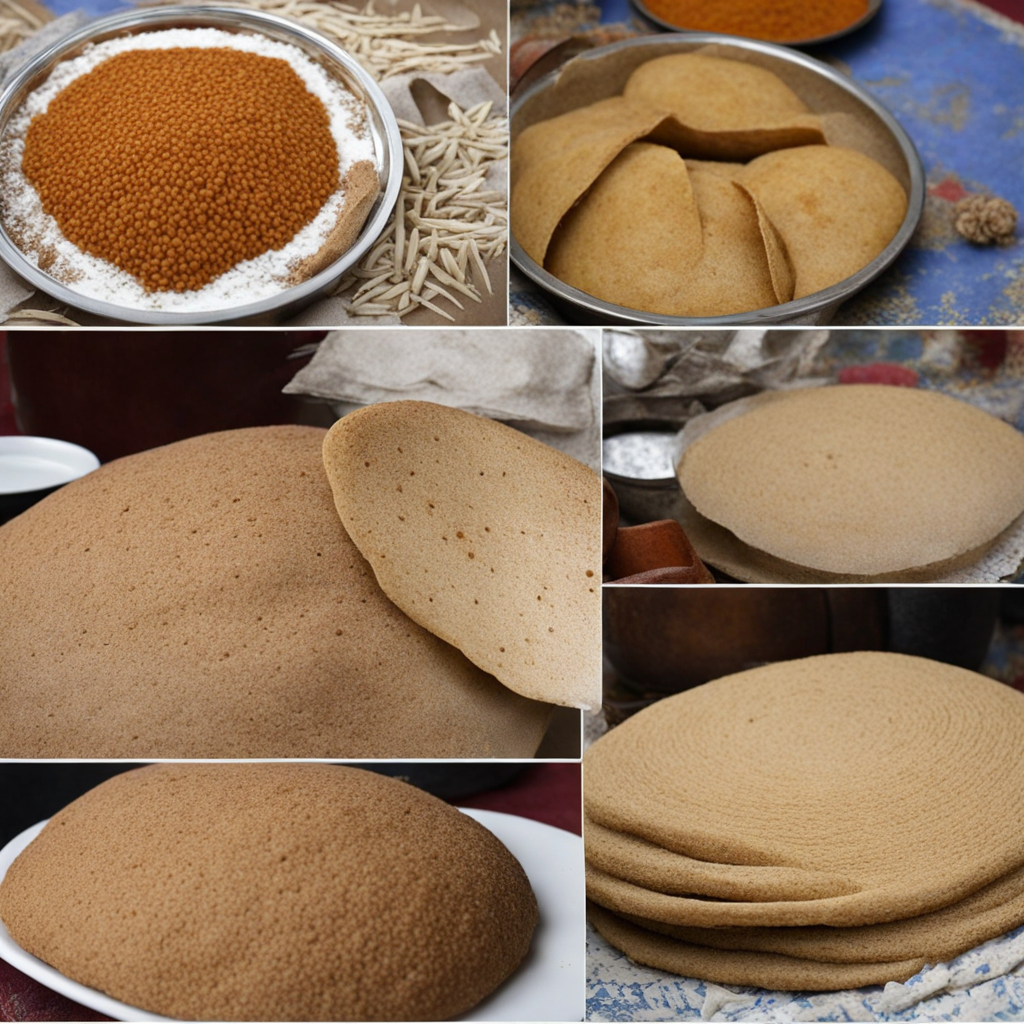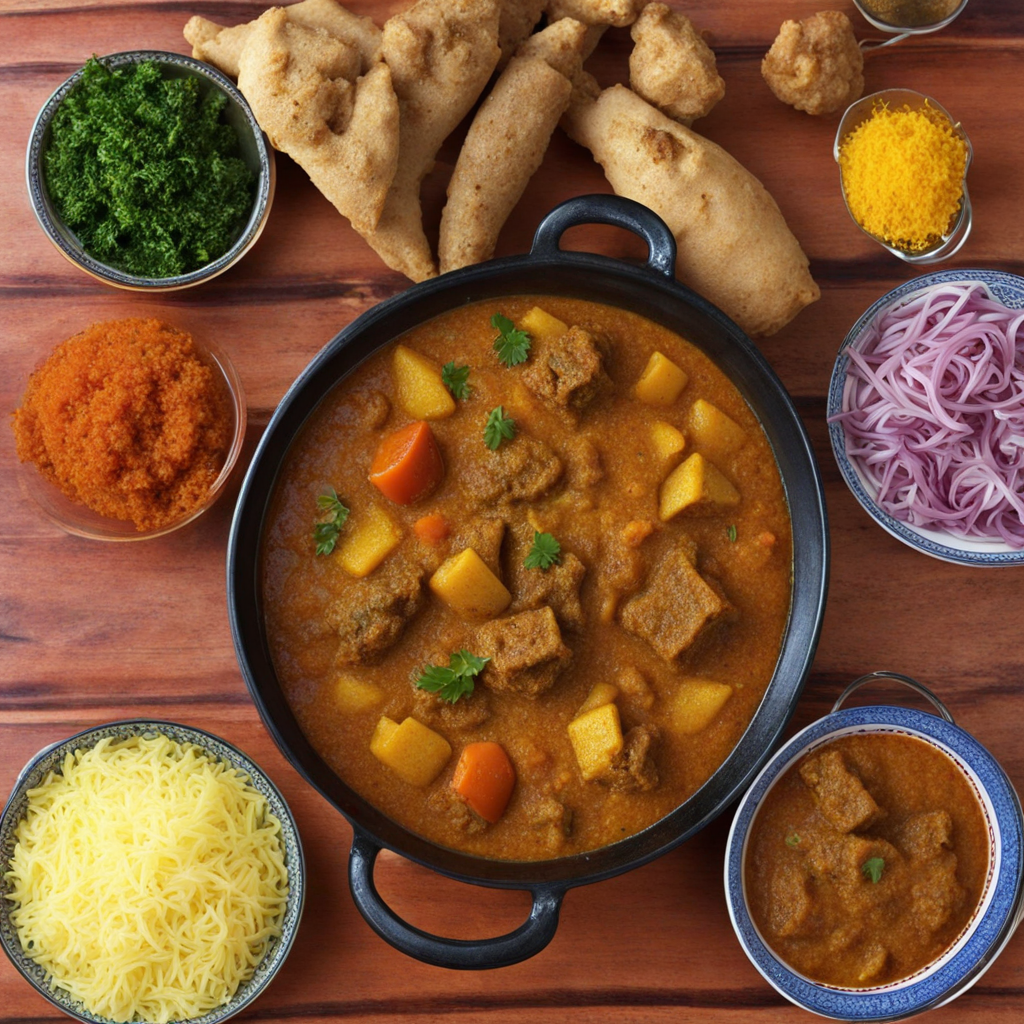Ades
Ades is a traditional Eritrean dish that captivates the senses with its rich flavors and unique textures. At its core, Ades is made from a base of fermented teff flour, which is a staple grain in Eritrea. The teff flour is mixed with water to create a batter that is left to ferment for several days, developing a slightly tangy taste that sets it apart from other dishes. The fermented batter is then poured onto a hot griddle, resulting in thin, pancake-like rounds that are soft, spongy, and incredibly versatile. This delightful flatbread serves as a perfect accompaniment to various stews and sauces, absorbing the flavors beautifully while providing a delightful chewiness. The beauty of Ades lies in its ability to complement the vibrant, spiced dishes of Eritrean cuisine. Typically served with a variety of stews, known as 'zighni,' made from lentils, vegetables, or meat, Ades acts as both a utensil and a side. Diners often tear off pieces of the flatbread to scoop up the hearty stews, creating a communal dining experience that is both satisfying and engaging. The combination of the mildly sour Ades and the robust, aromatic spices of the zighni creates a harmony of flavors that is both comforting and invigorating. Beyond its taste, Ades also embodies the essence of Eritrean culture, where food is a medium for connection and tradition. Sharing a meal that includes Ades signifies hospitality and warmth, as families gather around the table to enjoy the fruits of their labor. Whether you are enjoying it with a rich meat stew or a spicy vegetable medley, Ades invites you to explore the heart of Eritrean cuisine, offering a delightful and memorable culinary experience that speaks to the soul.
How It Became This Dish
The History of ኣደስ (Adas) in Eritrean Cuisine Introduction Eritrea, a nation situated in the Horn of Africa, boasts a rich tapestry of cultural influences, owing to its unique geographical location and history. Among the many facets of Eritrean culture, food stands out as a vital expression of identity, community, and heritage. One such dish that encapsulates the essence of Eritrean cuisine is ኣደስ (Adas), a lentil-based dish that reflects the agricultural practices, religious traditions, and social dynamics of the region. Origins of Adas The origins of Adas can be traced back to the ancient agricultural practices of the Eritrean highlands, where lentils, along with other legumes, have been cultivated for thousands of years. The fertile lands, enriched by the seasonal rains, provided ideal conditions for growing lentils, which were not only a staple food but also a source of protein for the predominantly agrarian communities. Lentils hold a significant place in various cultures around the world, but their prominence in Eritrea is particularly notable. The cultivation of lentils in the region is believed to have been influenced by ancient trade routes that connected the Horn of Africa with the Middle East and the Mediterranean. Archaeological evidence suggests that legumes, including lentils, were an important part of the diet of ancient civilizations, and Eritrea was no exception. Cultural Significance of Adas Adas is more than just a dish; it is a cultural symbol that embodies the communal spirit of Eritrean society. Lentils are often cooked during significant celebrations and religious observances, including the fasts of the Eritrean Orthodox Church. The preparation of Adas is typically a communal activity, bringing families and communities together in the kitchen. Women, in particular, play a crucial role in the preparation of this dish, passing down traditional recipes through generations. The dish is often served during major holidays, such as Meskel (the Feast of the Finding of the True Cross) and Timkat (Epiphany), where it symbolizes humility and sustenance. The practice of sharing Adas during these celebrations reinforces the values of generosity and togetherness within Eritrean culture. Furthermore, the dish’s vegetarian nature makes it especially significant during fasting periods, where abstaining from meat is customary. Development Over Time As Eritrea underwent various historical transformations, so too did the preparation and consumption of Adas. The colonial period, particularly during the Italian occupation from the late 19th century to the mid-20th century, introduced new culinary influences. Italian cuisine, with its emphasis on pasta and sauces, influenced some Eritrean cooking styles. However, traditional dishes like Adas remained largely untouched, serving as a resilient reminder of Eritrean identity amid foreign rule. The Eritrean War of Independence (1961-1991) further solidified the cultural importance of Adas as a symbol of national pride. During the protracted conflict, food became a source of comfort and a means of preserving cultural identity. Adas was often consumed by freedom fighters and civilians alike, serving as a unifying dish that provided nourishment and a sense of community in times of struggle. Post-independence, Eritrea has witnessed a renaissance of its culinary traditions, with a renewed focus on local ingredients and traditional recipes. Adas has gained recognition not only as a staple food but also as a versatile dish that can be adapted to various tastes and dietary needs. Today, Eritrean restaurants around the world proudly feature Adas on their menus, introducing this cherished dish to international audiences. Preparation and Variations The preparation of Adas is relatively straightforward, yet the skill lies in the balance of flavors and textures. The base of the dish consists of lentils, which are typically simmered until tender and then seasoned with a blend of spices such as cumin, garlic, and onion. The dish can be served in various forms, ranging from a thick stew to a lighter soup, depending on regional preferences and personal tastes. In Eritrean households, Adas is often accompanied by ምሳር (misar), a type of injera (a spongy flatbread made from teff flour), which serves as both a utensil and a side dish. The combination of the earthy flavors of Adas with the tangy notes of injera creates a harmonious balance that is a hallmark of Eritrean cuisine. Regional variations of Adas exist, reflecting the diverse culinary practices across Eritrea. For example, in coastal areas, seafood may be integrated into the dish, offering a unique twist that showcases the country’s maritime resources. Additionally, some families may add vegetables such as carrots and potatoes to enhance the nutritional content and flavor profile of the dish. Conclusion In conclusion, ኣደስ (Adas) is a dish that transcends mere sustenance; it is a representation of Eritrean culture, history, and resilience. Its origins rooted in agricultural practices, its cultural significance tied to communal values, and its evolution through historical challenges highlight the enduring legacy of this remarkable dish. As Eritrea continues to navigate the complexities of modernity, Adas remains a cherished symbol of national pride and a bridge between the past and the present, inviting all to partake in its rich flavors and cultural heritage. Whether served in a bustling restaurant or shared among family at home, Adas serves as a delicious reminder of the enduring spirit of Eritrea.
You may like
Discover local flavors from Eritrea


